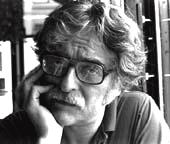We have received a lot of email asking when film-based photography will die, completely replaced by digital. The answer - next Wednesday at 3:30 PM. Kidding, the actual date is January 12, 2004. I have no idea when film will be phased out. I hope it never is. For all practical purposes, it has been phased out of breaking news for sometime. To an increasing degree, less deadlined editorial material that could be shot on film will be shot on digital simply because photo departments will be set up for digital. Yes, the still lifes on the food page will be digital. But there is a little more to photography than journalism. And even some journalism is best handled by gear that is not yet available in the digital world. For the most part, the digital cameras we use as journalists are based on the 35-mm SLR - perhaps the single most versatile camera made. But when you look at a Leica rangefinder - small, quiet, accurate focusing with interchangeable wide-angle and normal lenses of high speed - there is no digital equivalent. The small, unobtrusive rangefinder camera continues to have a real place in the world of journalism. It travels well, doesn't scream, "I'm taking your picture," can be independant of batteries and/or travel with a small supply of non rechargables. The lenses are small. And the film can be very fast. And, if you want something even smaller and less obtrusive, if you want to be mistaken for an idiotic tourist rather than a nosy photojournalist, try the high end point-and-pushes like the Minilux or Contax T3. The digital cameras that compete in this world are often bigger in size and lesser in image quality than their film bretheren. While I've seen excellent results from these smaller cameras on the printed page, they don't even approach what a tiny piece of film can do with a 16x20 or larger print - even when that film is black-and-white and exposed at EI 1600. Come to think of it, many of the "professional" digital cameras can't compete in that world. Now your editor couldn't give a damn whether or not your images can make a killer of a big print - until contest time comes up and and he wants to be seen as the leader and master of the best photo team in the whole world. But if you are a real photographer, arrogant, conceited and filled with self importance, you think a lot about your images moving beyond the daily paper. I don't think this makes you leave your digital camera at home. But I do think if you have a hot "project," you might consider doing it on film. There are a lot of other areas where the old fashioned "analog" technology is still important. I can't see the nature photographer who uses 8x10 or some large format panoramic toting around long extension chords for a digital back that demands a power supply (as does the large screen monitor). But I sure can see a product photographer shooting a larger digital camera. Some galleries, not all, still want a silver fibre print for black-and-white even though the color prints on their walls are computer generated prints on resin coated stock. While that may sound absurd, there is a look to a well made silver print that is unique and inherently beautiful. Ink sits on top of the paper; silver doesn't. I'll let you in on a secret. For years I hated having to exhibit prints under glass. There was always a little glare, sometimes a noticable reflection, that detracted from the image. But when prints are under glass, it is almost impossible to tell the difference between silver and ink jet. As I have a large amount of silver prints and a growing amount of digital prints, I now love glass. There are a lot of differences between analog film cameras and digital cameras. I could go on listing a number of differences that currently make analog cameras more useful in specific situations. But I have to do some digital assignments to pay my film bill. © Bill Pierce |
|
|
Write a Letter
to the Editor |
